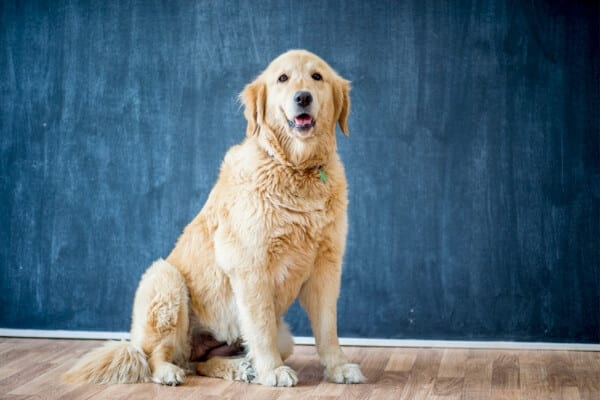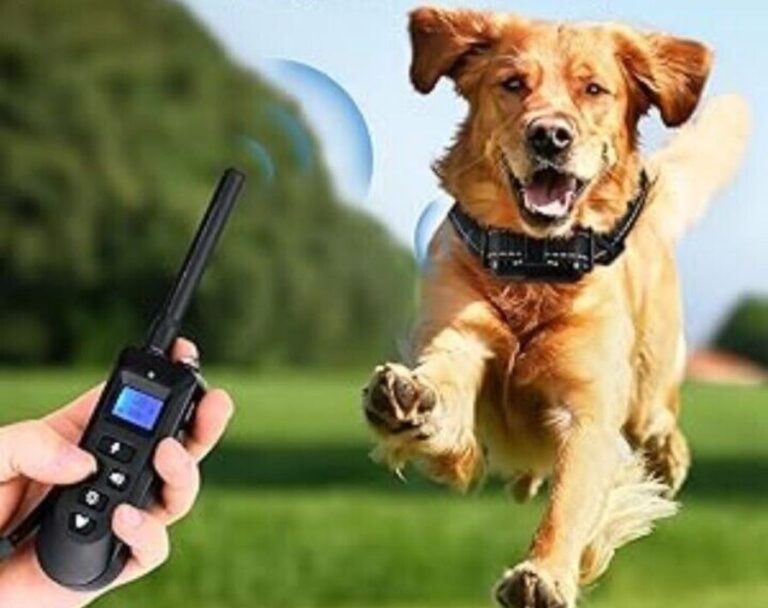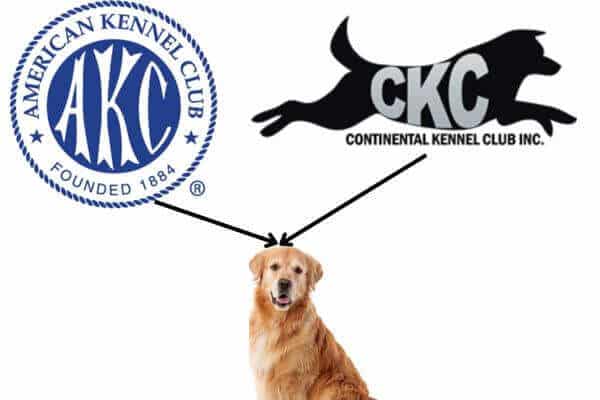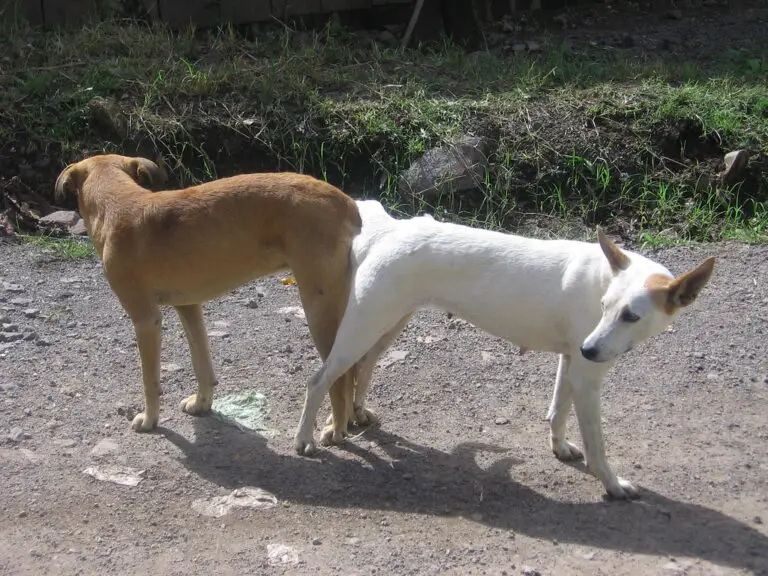How Long To Keep Cone On Dog After Neuter, Spay, Surgery, and More
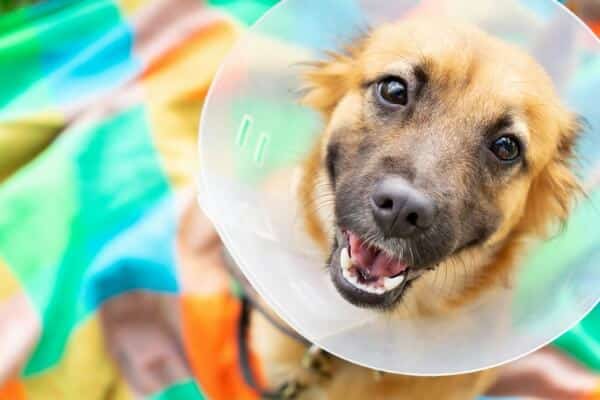
As relatable as it might sound, it always feels like a relief to get your pup discharged from the hospital after undergoing a successful surgical procedure like spaying, neutering, or any other sort of surgery. But at the same time, your major concern is likely going to be about your canine‘s post-operative care.
Normally, after performing surgeries you are instructed to put a cone encircling the neck part of your pet. This plays a vital role in your dog’s recovery.
How long a dog has to keep a cone depends upon your canine’s wound type, kind of incision, and dissolving time of stitches.
After undergoing minor surgeries like spaying, neutering, ear cropping, and other eye-related surgeries, your pooch needs to wear a cone for a minimum of 1-2 weeks. Whilst for major surgeries like TPLO and other orthopedic surgeries, it may take 3-6 months till you can safely remove the cone from your furry friend’s neck.
The cone-wearing duration can be extended when an infection or other health-related problems is slowing down the healing process.
Ensure you observe the wound regularly and avoid removing the cone too early. It is imperative that you follow your vet’s instructions to achieve the best result.
Why Is Doggo Cone So Important?
At some point in your pooch’s life, he has to wear a cone around his neck because dogs are not as careful or vigilant as human beings in protecting their wounds.
The Doggo cone also known as the Elizabethan collar, cone of shame, or e-collar is so important that they are acting as a physical barrier to stop your dog from touching, scratching, biting, or licking the sore, injuries, or surgical wounds.
Without a cone, your pooch is likely to disturb his wounds by licking, biting, and scratching, which may lead to the loosening of stitches and re-opening of wounds hence more damage and delayed recovery. Cones also protect wounds from bacterial infections as wound-licking may introduce various harmful bacteria potentially leading to severe health conditions.
In essence, it’s better to be safe than sorry, and using a dog cone is a good way to save yourself another trip to the vet.
How Long To Keep Cone On Dog After Neuter?
Neutering is a surgical procedure to make your male dog infertile. After neutering, your pooch must wear an e-collar for a minimum of 7-14 days. Generally, neutering has a shorter recovery time but soon after surgery, a cone is needed because your dog will likely lick, scratch, or bite the incising site.
Though two weeks is the approximate recovery time, it can vary depending on how well your doggo is taken care of after the incision. This duration may also vary from one breed to another.
If your dog is old or if your pooch is highly energetic and has re-opened the wounds then the recovery time may extend to 2-3 weeks after neutering.
Make sure under such conditions your pooch needs to wear a collar until you get a go-ahead from your vet to remove the cone.
How Long To Keep Cone On Dog After Spay
Normally, female dogs undergo spaying to remove their reproductive parts and they have to wear an Elizabethan collar after they get spayed.
Your female pooch has to keep a cone for a minimum of 10 days but the standard healing time limit is 14 days.
Typically, your vet may remove cones from your fido’s neck on the 10th day after spaying, when the inner cut has been healed but the sutures are still intact. Usually, on the 14th day, sutures would have started dissolving or will be removed by the vet if non-absorbable.
On the other hand, old age dogs will have to wear Elizabethan collars until they get fully healed or recovered from surgery.
Soon after the spaying incision, providing adequate care for your pet is another way to ensure your dog’s recovery duration is shortened.
As a pet owner, you should try to limit your pooch from jumping and playing activities. Otherwise, your female pet can re-open her wounds, Eventually, your sweet fido will hold cones for a longer duration.
Lastly, after spaying, if you remove the cone before time and without your vet’s permission, you may be doing more harm than good to your little friend because you will be exposing them to a greater risk of infection. If your dog keeps taking the cone off, it’s best to look for an effective alternative as discussed later in this article.
How Long To Keep Cone On Dog After Eye Surgery (Cherry Eye & Cataract)
Cherry Eye:
This is a medical condition in which the prolapsed gland of the third eyelid (also known as the nictitating membrane) of dogs becomes visible and swells outward. After this surgical procedure, your pooch is suggested to wear a cone for nearly 2 weeks to protect him from self-inflicted trauma in his eyes which is the incision site.
For this duration make sure your pet is doing minimal activities and should not try to rub their eyes as there is a chance of re-prolapsing extending the duration of e-collar wearing around the neck.
Cataract:
A cataract is a cloudy greyish layer that covers your pet’s eyeball, hence blocking its vision. This condition is treatable via surgery. Canines that undergo cataract surgeries are not allowed to wipe or scratch their eye areas and need to wear cones for approximately 2-3 weeks as a post-surgical precaution.
After cataract surgery, if your pooch is not at rest and still involved in its daily activities, the healing process can be delayed and the cone is removed much later.
How Long To Keep Cone On Dog After Ear Cropping
Ear trimming is a surgical method in which the pinna (flopping parts) of ears get removed and undergo surgery just to make sure that your fido ears are according to your preferred shape or are standing erect.
After ear surgery, fixing a cone around a dog’s scruff is a must for better outcomes because the ear is a delicate part of your canine’s body. The post-surgical care of the ear requires a constant wearing of an e-collar for about 2-3 weeks for the edges of the ear to heal.
In order to get the desired straightened ears, some breeds may be taped or bandaged, so collectively it may take 5-8 weeks to get fully recovered with a persistent cone-wearing duration of up to 8 weeks.
How Long To Keep Cone On Dog After Stitches
Stitches are surgical aids that help in wound closure and provide mechanical support for healing a wound site. After stitching, a pooch is suggested to put a cone on by the vet.
However, the cone-wearing time span after fixing a stitch mainly depends upon the type of surgery.
For surgeries like spaying and neutering, it will take about 2 weeks for the wound healing process to be completed after which your vet will take off the cone immediately and remove the stitches if they are non-absorbable.
In major incisions like orthopedic surgeries, your pet needs to keep the cone on until he gets fully recovered from the surgery. If the stitches are absorbable, it may take 3-6 months for the stitches to fully dissolve.
Asides from the incision type, infection, low oxygen tension, poor nutritional status, and old age are also considerable factors that may prolong recovery time and unfortunately, your pooch has to keep up with the cone for a longer period.
How Long To Keep Cone On Dog After TPLO Surgery
During vigorous physical activities, dogs can tear their knee ligament known as the cranial cruciate ligament (CCL) which is responsible for controlling the flexion and extension of your fido’s knee.
Surgery is performed after this accidental rupturing of the ligament called Tibia Plateau Levelling Osteotomy (TPLO) with immediate post-surgical recommendations to keep a cone on.
After TPLO, the healing time determines how long your pooch will keep his cone on.
Normally, cone-wearing duration after TPLO is longer when compared to neutering or spaying. After 2 weeks, the incision site is still sore, red, and swollen, so there is no chance of removing the cone within the first two weeks.
Vets recommend that dogs should not remove the cone for at least 12 weeks after TPLO when you will likely be given a go-ahead to remove the cone. The complete recovery duration of TPLO is about 6 months.
How Long To Keep Cone On Dog For Hotspots
This is an itchy skin condition with moist sores mostly found at the head, legs, or hip regions of your canine’s body which usually results from self-inflicted injuries like biting, licking, and scratching. It is also known as moist dermatitis or pyotraumatic dermatitis,
Hot spots are so common and these lesions typically heal within 1 week from the beginning of treatment, and so is the duration of the cone-wearing.
If untreated or not well cared-for, hot spot sores become so severe that they may release secretions or pus, and then the recovery time automatically extends to 2 to 3 weeks
Dog Keeps Taking Off The Cone. What Should I Do?
The main reason why your dog keeps removing his cone is that the cone may be disrupting his regular daily activities eating, drinking, sleeping, and playing. He may be going through so much physical distress, especially with the traditional plastic cones.
Moreover, wearing a cone can block their vision and it may increase their chances of falling from stairs, bumping into the walls, doors, and furniture, hence ending up in other collar-associated injuries in your pooch. If your dog is not comfortable wearing the plastic cone then do not impose this hard material on them. What do you need to do? Consider various alternatives to cones for your four-legged companion.
You can find 8 different cone alternatives below.
- Soft collars are foldable that make eating and drinking easy for your pooch.
- Inflatable Collars provide clear vision and mobility hence preventing bumping.
- Neck braces provide comfortable sleeping, eating, and drinking and also prevent licking.
- Muzzles are also recommended instead of a cone, to stop biting and licking the spots. Your canine can still eat and drink while wearing muzzles.
- Visors are suggested after eye surgery to halt your fido from eye rubbing.
- DIY E-Collars are also good to use if your dog hates irritating cones. Most pet owners use towels, clothes, and any soft fabric to make a comfortable collar around their neck.
- Medications can be a good option in a case if the recovery duration is less than two weeks so to avoid cone, one can use painkillers, anti-itching medicines, and sedatives for proper rest and reduced activities of your canine.
- Training and encouraging your pooch to wear a cone or its alternatives before surgery can also be a helpful gesture to make your pooch habitual of traditional cone-wearing or any other alternative of your desire. You can also grant a reward for wearing a cone.
Tips To Stop Dog Licking If Cone Doesn’t Work
Some of the breeds show great patience wearing a cone, despite their instinctive habit of licking. While others feel so restless that they do not want to miss a single chance to discard the cone, escape and start licking themselves.
In a nutshell, if your dog is not wearing the cone and wants to lick the incision site, certain tips can be useful to help him.
1. Use Soft Or Inflatable Collars Instead
If your pooch is struggling with a common rigid cone, it is important to look for better ways to relieve your little friend of his anguish. You can visit your local pet store and get a soft collar, an inflatable collar, a muzzle, a visor, or other alternatives that have been discussed previously.
You can also find pillow collars, padded rings, and donuts in a pet store. They are very soft, easy to wear, and made up of soft clothes so ultimately your pooch will love to wear these alternatives and can stop licking the surgical sites.
2. Bandage and Apply Anti-lick Spray
If your doggo dislikes wearing a cone and keeps licking the incision site, then an anti-lick spray or anti-lick strips can be a good second choice.
Pet owners can apply an anti-lick spray to the bandage or directly to the incision area.
Anti-lick sprays contain certain ingredients that are bitter and distasteful to your dog upon licking. Anti-lick sprays are safe for your pooch and some offer anti-itch benefits.
Nowadays anti-lick strips are also becoming popular. Veterinarians just directly attach these strips to the wounds, hotspot, or surgical site so your pooch can not damage or reopen the wound anymore via licking.
3. Fido Can Wear a Recovery Suit To Cover Wounds
Not all doggos are comfortable wearing the so-called “cone of shame” and if your dog has injuries or surgeries in various parts of the body that can be covered by a recovery suit then this can become an excellent replacement option.
Your dog will be prevented from scratching, licking, or biting the wounds while reaping other great benefits like freedom, comfort, reduced stress, and a faster healing process.
Not only do recovery suits offer protection to your dog’s surgical wounds, stitches, bandages, and hotspots, it leaves room for air circulation around the healing site and you are not going to worry about your dog taking the suit off.
4. Distract Fido With Fun Activities
If your fido refuses to wear a cone and wants to lick his wound, again and again, you can distract him by engaging him in different fun games or activities. However, after some time of surgeries, it is required to keep physical activities minimal.
Clearly, this option is not foolproof, hence, it is better combined with the other methods above.
Whenever you notice your lovely pooch trying to lick the injured part of its body, you should offer him licking mats or chewing balls.
Kong dog toys are one of the best probes to keep your pooch busy and mentally stimulated. Pet parents can stuff the kong with the favorite treat of their fido so they spend most of their time licking and chewing the kong.
Besides toys, there are a lot of other fun games for dogs to keep them distracted from licking like hide and seek, teaching him a new trick, giving him a relaxing massage, to taking him out for a light walk if your vet recommends.
Tips To Aid Faster Recovery Of Surgical Wounds
When your dog returns home after undergoing a surgical procedure, it is important he goes back to performing his normal daily activities.
Here are some helpful post-surgical precautions that every pet owner needs to know for your canine’s quick recovery.
1. Follow your Vet Instructions
While caring for your recovering pet, it is important to adhere to your vet’s direction to achieve the best possible result. Make sure to keep the wound dry and properly dressed to aid in faster recovery. Do not apply any healing cream or spray which is not prescribed by the vet.
2. Put A Stop To Licking
If you want swift and secure recovery without any scar left on your pooch’s skin. Then you should hold your doggo from licking and biting the incisions site.
Elizabethan collar and other alternatives discussed above can be a perfect option.
3. Limit Your Doggo Activities
Soon after the incision, manage a crate or kennel to provide a warm and comfortable zone for complete rest. For effective and timely healing, you should not allow your fido to run, play or jump around.
4. Observe The Wound Regularly
Sometimes instead of healing, the surgical spots may get swollen, bleed, ooze, or may get infected and leave a nasty smell. So, constant monitoring (twice a day) of the incision site can help your dog to recover faster. If you notice anything unusual, contact your vet straight away.
How Long Does It Take For Dogs To Get Used To A Cone
Not to surprise, but many of the dogs do not give a positive response upon fixing a cone around their neck. They try to escape, run or sway their head downwards but after some time they cool down and manage themselves with the cone.
If you have picked the right recovery e-collar for your pooch, he will likely get used to it within 24 hours. In other cases, your pet may take 2-3 days to adapt to wearing a cone around his scruff.
However, you should train your dog and give him rewards for wearing a cone. Make sure your pooch is wearing the cone all the time to prevent infection at the surgical site.
Should My Dog Sleep With Cone On After Surgery?
Yes, your pooch can sleep with a cone on. Not only is it safe for them, but this will further help them form the habit of wearing a cone more quickly. However, you can adjust your dog’s bedding to prioritize comfort after surgery.
First, arrange a vast comfortable area or mattress for sleep and put a pillow under his head but make sure that pillow should be large enough to support his head with a cone on, so he can sleep with a cone easily.
Follow the two-finger rule to maintain the tightness of the cone. Then, loosen the cone a little as tight cones may deprive your dog of comfort during sleeping hours,
Cones made up of plastic can be irritating for dogs to sleep so you should try different soft alternatives for your beloved fido for a perfect and deep nap.
Ultimately, you can invite your pooch to your bed. It is more than a sign of encouraging them to sleep with a cone.
Dog Depressed! How To Make Dog Cone More Comfortable
Normally, dogs get depressed if the cone is highly uncomfortable or irritating to them in certain aspects. Here are some tips that can make a cone more comfortable for your dog:
- Ensure that the cone is not too tight; maintain a two-finger gap between your dog’s neck and the e-collar.
- Assist your canine with eating and drinking water.
- Remove extra hurdles and furniture from your surroundings.
- Support your doggo through the staircase as their peripheral vision is blocked due to the cone.
- Change the traditional plastic cone with other less irritating alternatives.
- Keep food and liquid bowls away from the wall.
- Do not leave your pooch unattended until he gets used to the e-collar.
- Be patient and keep on praising your fido whenever he puts back his cone.
Final Thoughts: How Long To Keep Cone On Dog
Doggo cones are incredible protective barriers worn after surgeries and prevent your dog from self and accidental trauma as well as infections.
Dogs that have undergone minor surgeries experience faster recovery and should wear a proper cone for at least 14 days according to vet guides. Other major surgeries may take months for recovery and your pooch has to keep a cone on for up to 3 months after the incision.
However, wearing a cone is highly uncomfortable for dogs at first, but as a pet parent, you can help and encourage your fido to wear a cone by offering him rewards after putting the cone over his neck. You can also opt for suitable cone alternatives if the cone does not work for your pooch.
Provide your adorable canine with a huge foamy sleeping area, spoon-feed him, create more room for him to walk and roam around, and assist him in climbing stairs. Show him your utmost love and care during recovery and your pooch will be ever grateful.
Related Articles
Read related posts about

